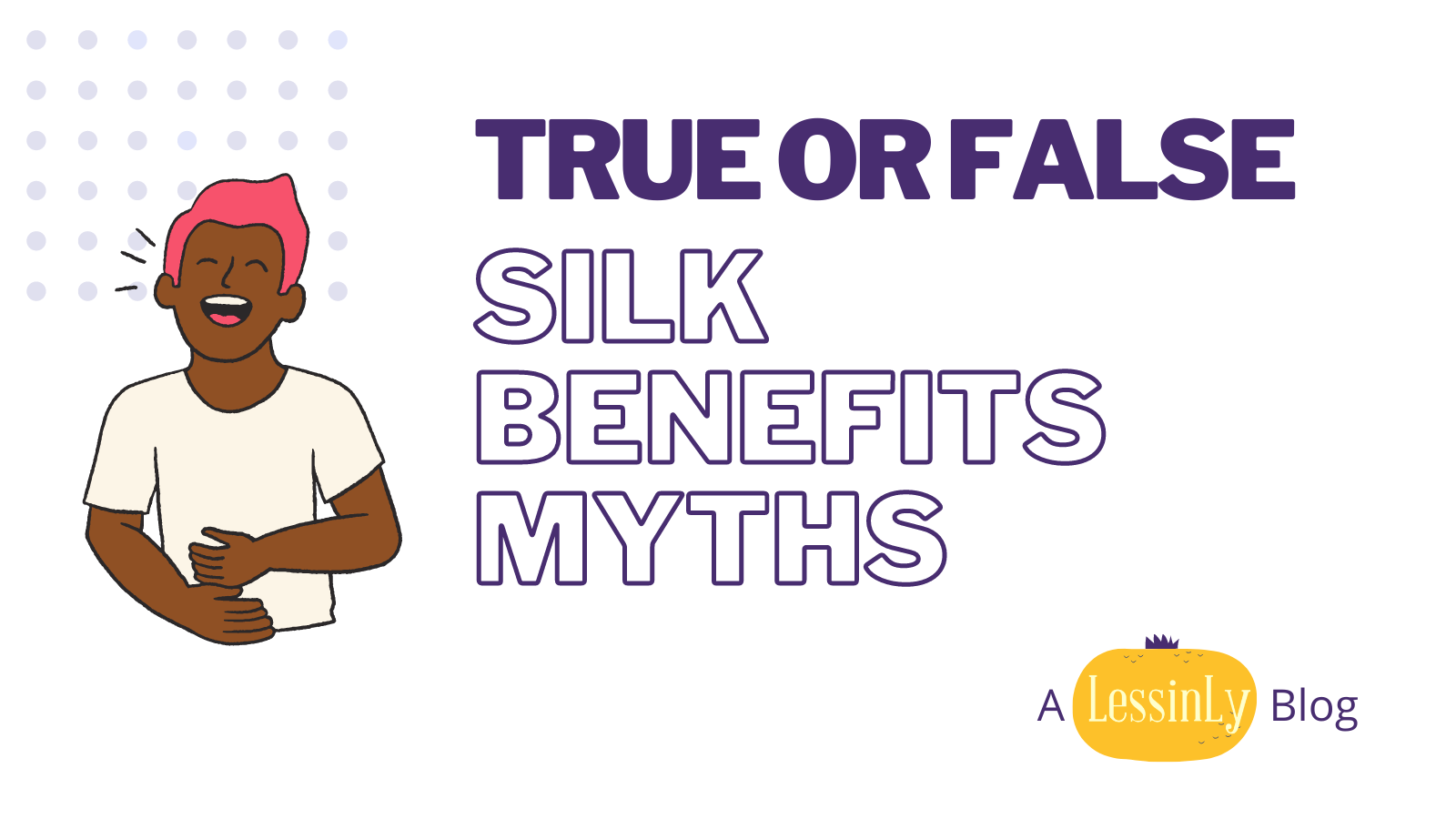1. Silk is good for skin and hairs because it got less friction.
True.
There are tons of proof about how silk is good for skin and hair. For example:
People may question: are these user experiences really proven by scientists or just some nice illusion created by buyers who invest in the commodity?
The answer is: scientifically, silk works.
In the post 8 Proven Ways to Prevent Wrinkles, a study found that “people who sleep on their side or stomach are prone to mechanical compression forces, which can speed up the formation of wrinkles, and also distort facial skin.” In that case, the silk pillowcases “help prevent abrasion of the skin” as they “create less friction”.
There is no research on the silk fabric as there are over 30 types of silk fabrics. Each type has different specifications, which means no research could cover them all. We can instead take a look at the silk fiber property.
According to chapter 1 – Advances in understanding the properties of silk in Advances in Silk Science and Technology:
“Textile fibers have coefficient of friction (μ) values ranging between 0.1 and 0.8, the lower value denoting higher frictional resistance (Morton and Hearle, 2008). Typical μ values for silk fiber to fiber friction is 0.26 for crossed fibers and 0.53 for parallel fibers, which are much higher than for other textile fibers. The higher μ value of silk fibers is attributed to a smooth fibrous surface coupled with high crystalline regions in the fiber.”
That’s why the silk pillowcases, duvet covers and bed sheets can benefit your skin more than other materials: they are all made of one of the smoothest natural fibers!
2. Silk fabric heavier than 25 momme is hard.
False.
Most silk fabrics are very soft despite the momme count.
Lots of silk brands indicate “xx momme silk is an ideal balance between softness and thickness”, in which the “xx” varies from time to time yet never over 25. This misleads people about the softness of “heavier” silks: 36 momme, 30 momme, 35 momme silk and above must be hard!
The truth is: even a 60 momme silk fabric is soft enough for delicate clothing.
This is a video of 30 momme silk. Watch it before you touch one!
The momme count shows the density, and how much silk is contained in this silk bedding/garment. It’s easy to see that the higher the momme count is, the heavier/thicker the silk will be. Theoretically, thicker silk is slightly less soft than a thinner one, yet most silk fabrics are softer compared with other fabrics with similar density.
There are 3 photos of silk in different momme counts: 19, 30, 60.



All the fabrics are shiny, soft and glossy. As the momme count gets higher, wrinkles are going less too. More information about momme is available here.
Lessinly offers a 30-day money-back guarantee. If you are still not sure about the texture of a 30 momme silk, try Lessinly.
3. your skin stays more hydrated on silk because it absorbs less moisture.
False.
Silk absorbs more moisture than lots of common fabrics.
Most people thinking so got the proof from a paper “絹布と他の繊維素材布の吸湿速度”. In its abstract, there is a statement as “The absorbing process could be characterized by the product ks·xd, where xd is the fabric weight after drying. The ks·xd values decreased in the order cotton>linen>silk>wool.”
Please note it was released in 1998. 20 years ago! There is an update of the moisture absorption during the past 20 years.
This page indicates the moisture absorption of most common fibers. Silk got 11.0% moisture regain, while cotton got 8.5%.
To be explicit, in a website introducing a new fiber, there is a figure that talks about moisture regain of 4 different fibers. The absorption of silk is higher than cotton, acetate, nylon and polyester.

So, silk, on the contrary, absorbs more moisture.
That, however, doesn’t mean your skin will be dry on silk. In fact, silk itself contains more moisture too, so it makes a nice balance between silky dry feeling and gentle texture.
That’s the reason why the silk pillowcase is good for hairs too. The excessive dampness will make them frizzy: imagine your hairs dried without a hairdryer on a damp day! You will never have to worry about that on a silk pillowcase.
4. No bacteria can stay on silk, so less cleaning is needed.
False.
Silk has better bacteria resistance, but they can go moldy if not treated properly.
Raw silk consists mainly of two proteins, fibroin (70-80%) and sericin (20-30%). The sericin has a natural infection resistance, and thus people believe the silk bedding can resist bacteria too.
Yet, please note that there are rarely silk beddings made of raw silk. Because of the high content of sericin, the fiber of raw silk is physically harder, making them less possible to be implied in the bedding industry.
the degumming process is the common raw silk treatment, making them the “real” silk for most garments and bedding. Degumming will remove most sericin, as well as it’s mildew proof.
Some people believe so because they never see a silk fabric with mildew. Well, let’s say:
- First, silk does have better protection against bacteria. However, better doesn’t mean 100%.
- Second, even the silk pillowcases (the most affordable silk bedding) is not cheap, so people do take better care of them compared with what they do to the cotton or satin bedding.
- Third, here we go : P

In short, you still need to take care of your silk stuff, no matter it’s an affordable pillowcase or a luxurious silk duvet cover. How to wash your Lessinly silk bedding can be a reference.
5. Mulberry silk is rare.
False.
Mulberry silk is the most common silk.
According to the export data of China from Jan to Apr 2020, the export amount of raw mulberry silk was 1,028,758 kgs, while the parent category long silk (containing mulberry silk, wild silk and silk yarn) amount was 1,460,715 kgs. The mulberry silk contributes 70.42% of the export, as, of course, the most common silk.
Interestingly, wild silk is rarer and more expensive than mulberry silk. Yet wild silk is rarely used to produce the silk pillowcase, duvet cover or bed sheet, as it is less smooth than the mulberry silk, containing more sericin which is harder to remove.



